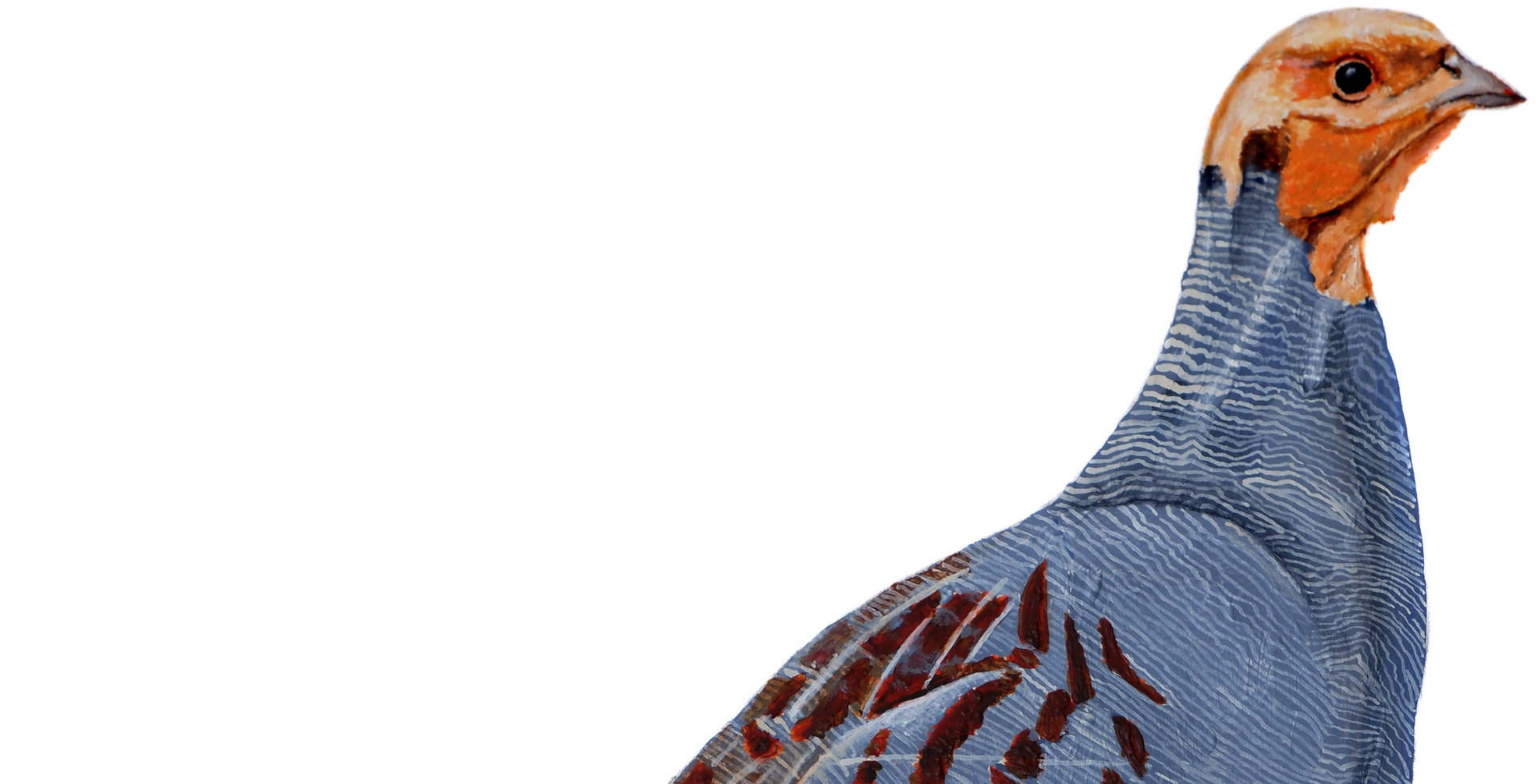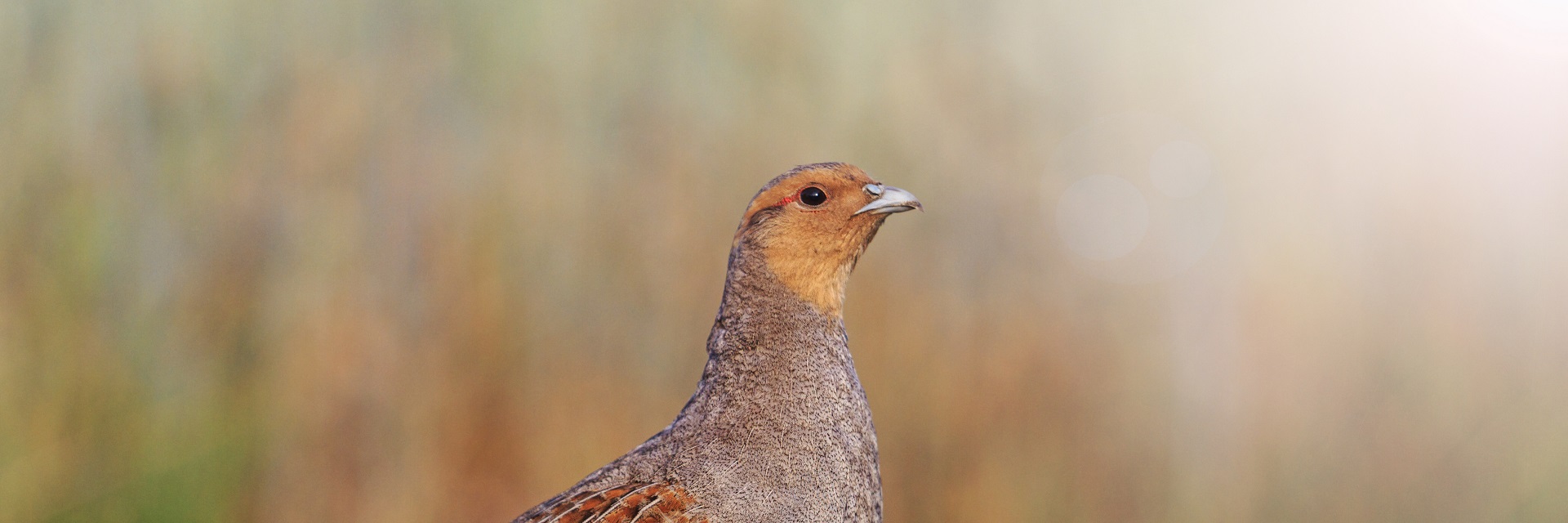What is a Grey partridge?
The Grey partridge is a bird. Not to be confused with the red-legged partridge, which is often bred for shoots, the grey partridge is often referred to as the English partridge and classified as a Red List species. It has a distinctive rust-coloured mask although if seen, it’s invariably running or flying away from you with a characteristic rapid wing beat that generates a strong whirring sound and in flight, reveals matching rust-coloured tail feathers. It also has dark feathers on its chest resembling an inverted horseshoe.
Why is the Grey partridge important to the Surrey Hills?
The grey partridge has suffered a steep decline in numbers in recent years with this partly being attributed to decreases in insect populations.


